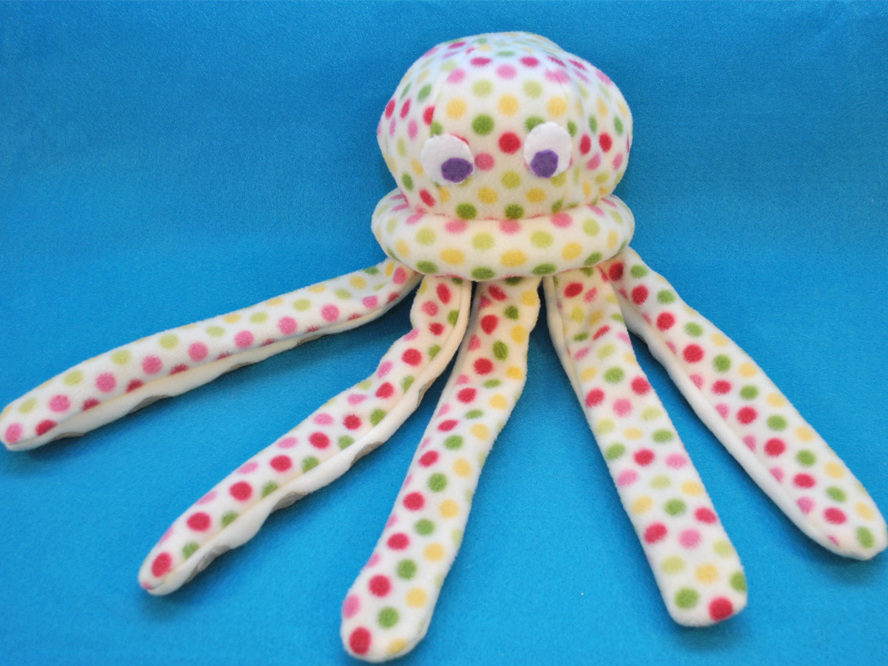This octopus/jellyfi
Using the technique shown in the Make:Online project Unruly, 100K resistors in the legs create a change in pitch between each conductive circle. I experimented with different resistor values at the end to change the sound of each leg as a whole and included some that I thought sounded cool. Feel free to change up the resistor values and make your own unique soundscape.


